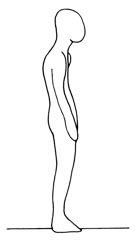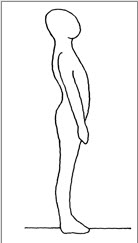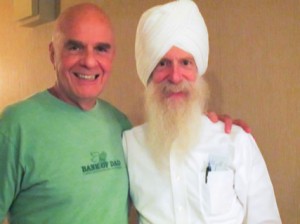 For years I’ve been talking to my patients and readers about the necessity of breathing correctly. Breathing is something we do so automatically that most of us do not think about it. Yet, most of us learn to breathe “backwards” as children and we continue to breathe this way for the rest of our lives.This contributes to many medical problems including headaches, digestive problems, and back and musculoskeletal problems to list a few.
For years I’ve been talking to my patients and readers about the necessity of breathing correctly. Breathing is something we do so automatically that most of us do not think about it. Yet, most of us learn to breathe “backwards” as children and we continue to breathe this way for the rest of our lives.This contributes to many medical problems including headaches, digestive problems, and back and musculoskeletal problems to list a few.
I’ve had the privilege to work with GuruPrem Khalsa for over 30 years now at the Khalsa Medical Clinic. He is an amazing bodywork practitioner who understands the mechanics of our body so well.
It is with great pleasure that I am able to repost this article which GuruPrem has written, on the correct way to breathe. Scroll to the bottom to see how to connect with him directly.
Breathing by GuruPrem Singh Khalsa
One thing I can say with absolute certainty, if I am breathing then I am alive! Everyone who is alive is breathing. We all breathe, but very few know how do so properly. Typically we remain so unaware of our breathing the we are often surprised to learn that something as common as speaking is done on an exhale. We breathe a lot, approximately 20,000 times a day, about 15 breaths per minute, in our so called relaxed state. You might think that with all this practice we would be good at it. The problem is, for the most part, we have become well practiced at being incorrect.
Why do humans have to be taught how to breathe? Don’t we do so naturally? This is one of the biggest distinctions between humans and animals. Animals which are born to live by their instincts and impulses, are naturally programed to breathe according to their needs and circumstances. Humans who are born to live by intuition need to train the breath to serve their higher nature. And what is this higher nature that distinguishes humans from all other creatures? It is the ability to relate to our souls and experience the Generator, Organizer and Deliverer of this human life.
As humans we are as calm, nervous, angry or sad, as we are breathing. This is where our great challenge arises. It is difficult to breathe calmly when we have been paradoxical breathers or shallow breathers for many years. After many millions of shallow breaths we have become stuck in the habit of breathing patterns that reflect our unresolved emotions and feelings.
These breathing habits inform our posture and ultimately becomes our posture. This dilemma of the human respiratory system has been understood for thousands of years by the very wise. Unfortunately this wisdom has not circulated freely in the public domain. My teacher, Yogi Bhajan, brought Kundalini Yoga to the West, in part to teach the common person how to move, breathe, think and speak consciously, and thus to be calm and relaxed. It is a very difficult world today, but with the skill of breath management we can learn better stress management.
We need to learn to become calm.To become calm we must learn to calm our breath.To calm the breath we must learn to equalize the speed of the inhale with the exhale.
I wrote this article to explain some of the mechanics of correct breathing and the most common errors that obstruct this process.
Check Your Breathing
To check your breathing come sitting up with your feet on the floor parallel to each other about 6 inches apart, notice your sitz bones touching the chair and sit with your spin as straight as you can.
Incorrect or Paradoxical Breathing:
Shoulders will rise on the inhale and drop on the exhale – You may feel tension in the shoulders, neck, upper back or face
Belly may feel tight all the time or distended all the time
Belly may distend/expand out on the exhale
Chest and rib cage fall on the exhale
Shoulders and upper back will feel tight.
Here are two examples of postural mis-alignment due to incorrect breathing
Bad Posture
Correct Breathing:
The diaphragm will expand and descend on the inhale, for this to happen the belly will need to relax and will expand a bit.
On the exhale, the belly will draw back towards the spine and the lower ribs will draw together and diaphragm will ascend.
Shoulders, neck, jaw and face will feel relaxed.
Here is an example of correct standing alignment.
Tips to Learn which abdominal muscles to use for proper exhalation:
To get a feel for using your abdominals to exhale, pucker your lips and pretend that you are trying to blow out candles without moving your torso or head forward, just use your lower abdominals, and blow, notice how your belly tries to pull in and up, try keeping the chest and ribcage lifted, now slow your breath down and try again and make the breath smoother and longer, then slowly inhale through the nose, ideally we want to learn to breathe mostly through our nose, if possible.
Those who have been blessed with the opportunity to move and breathe correctly, can learn to reduce the unnecessary tension or ‘armor’ of the mind and body. To surrender this unnecessary tension we must learn to relax.
If our breathing skills are underdeveloped we tend to have weak and unsupportive exhales along with weak and poorly supported postures. Fundamentally the exhale is the key to relaxation as well as the key to correct posture. The exhale that properly ascends the thoracic diaphragm establishes the position to receive a fully expansive and more symmetrical inhale. Generally speaking, the quality of the exhale directly influences the quality of the inhale.
Focus on your exhale:
Our job with breathing correct is the exhale, this is what you want to focus on, guide your exhale and the inhale will move into the space you have created. Exhale completely and you will feel more fulfilled with the inhale, if you want to change how you feel, exhale how you want to feel. Want to feel Happy? Exhale with a smile on you face and feel as though the exhale is supporting the smile on your face.
We must give to receive, exhale out the old breath to receive fresh air on the inhale.
As a result of this overall respiratory weakness, most people exhale themselves into a state of confinement instead of refinement. This confinement becomes obvious as people age. It is very common to loose inches of height as we move through our lives. A man might be six feet tall at forty years old, but at sixty “shrinks” to five foot ten. In addition to diminished height, a loss in lung capacity also occurs. This loss of spinal flexibility as well as lung capacity makes breathing more difficult which stresses our “stress management” further. There is a saying, “you are as old as your spine,” if you want to age gracefully, learn to breathe calmly and stay flexible.
Here is a Video with Guru Prem showing exactly how to breathe!
——————————-
GuruPrem Singh Khalsa is the author of two books that directly related to the body and how to use it correctly: Divine Alignment & The Heart Rules. You can find out more about him at: www.divinealignment.com and the books are available on Amazon.com. He has worked at Khalsa Medical Clinic for over 30 years as a Breath & Postural Alignment Therapist.






























